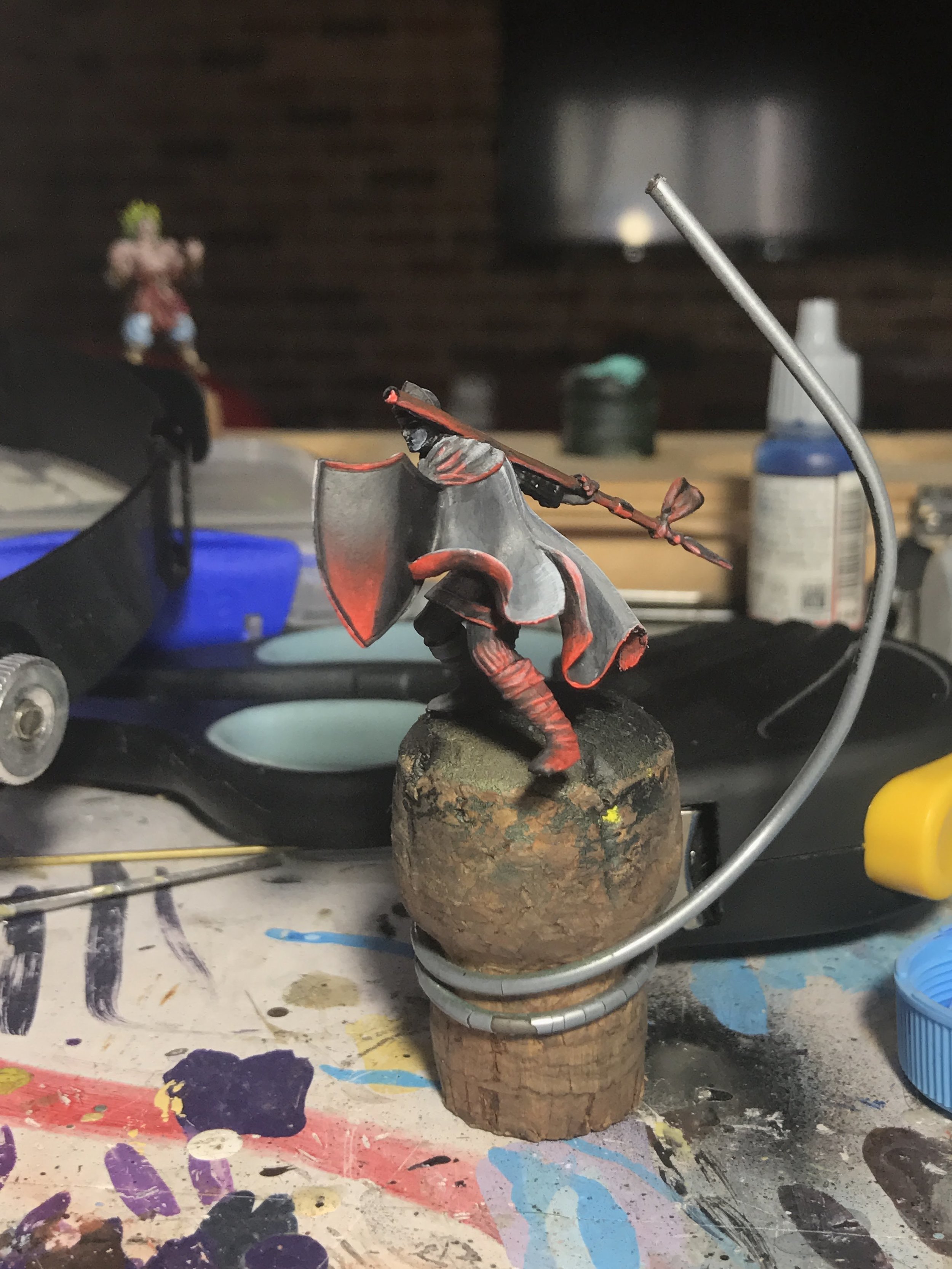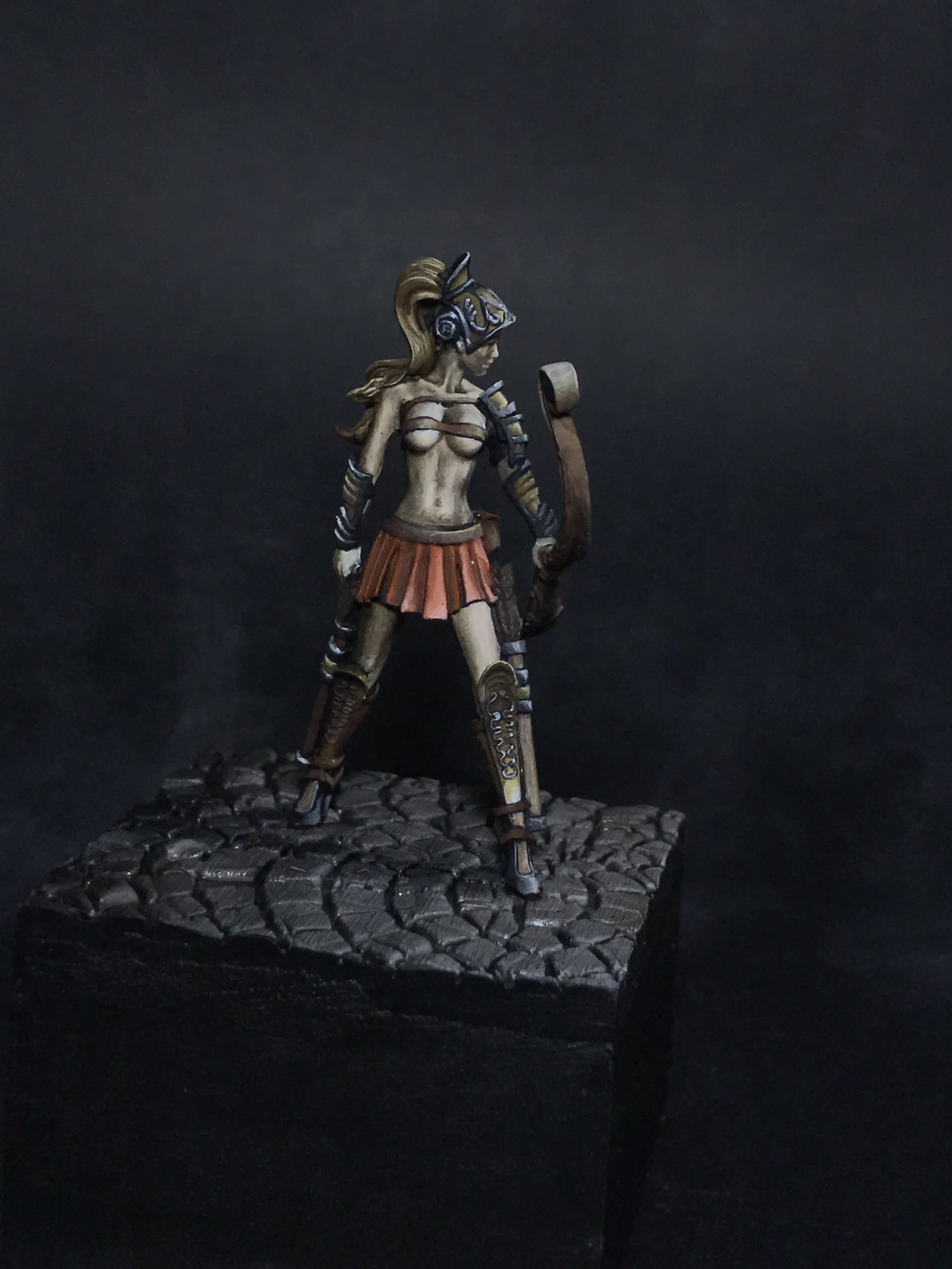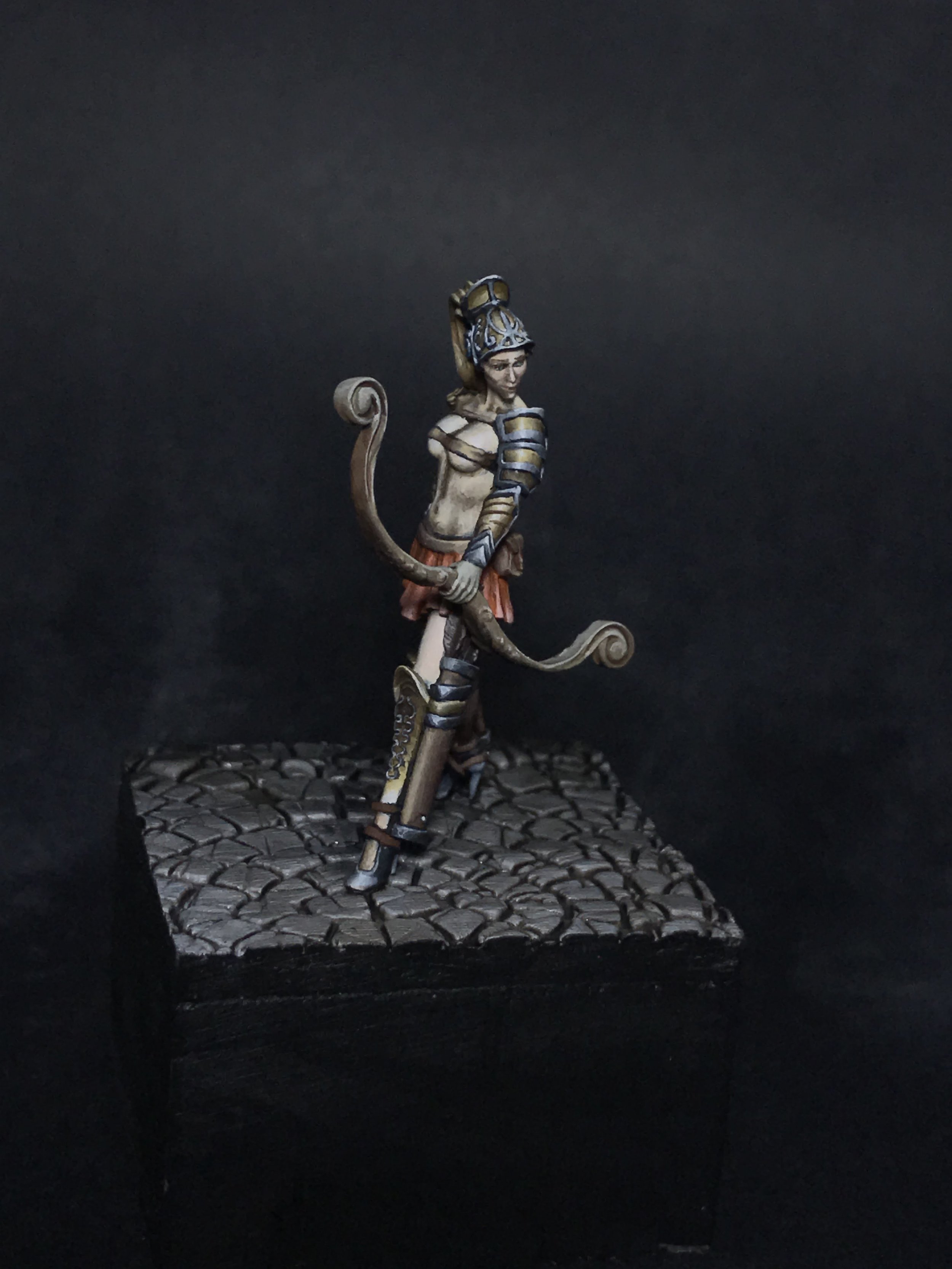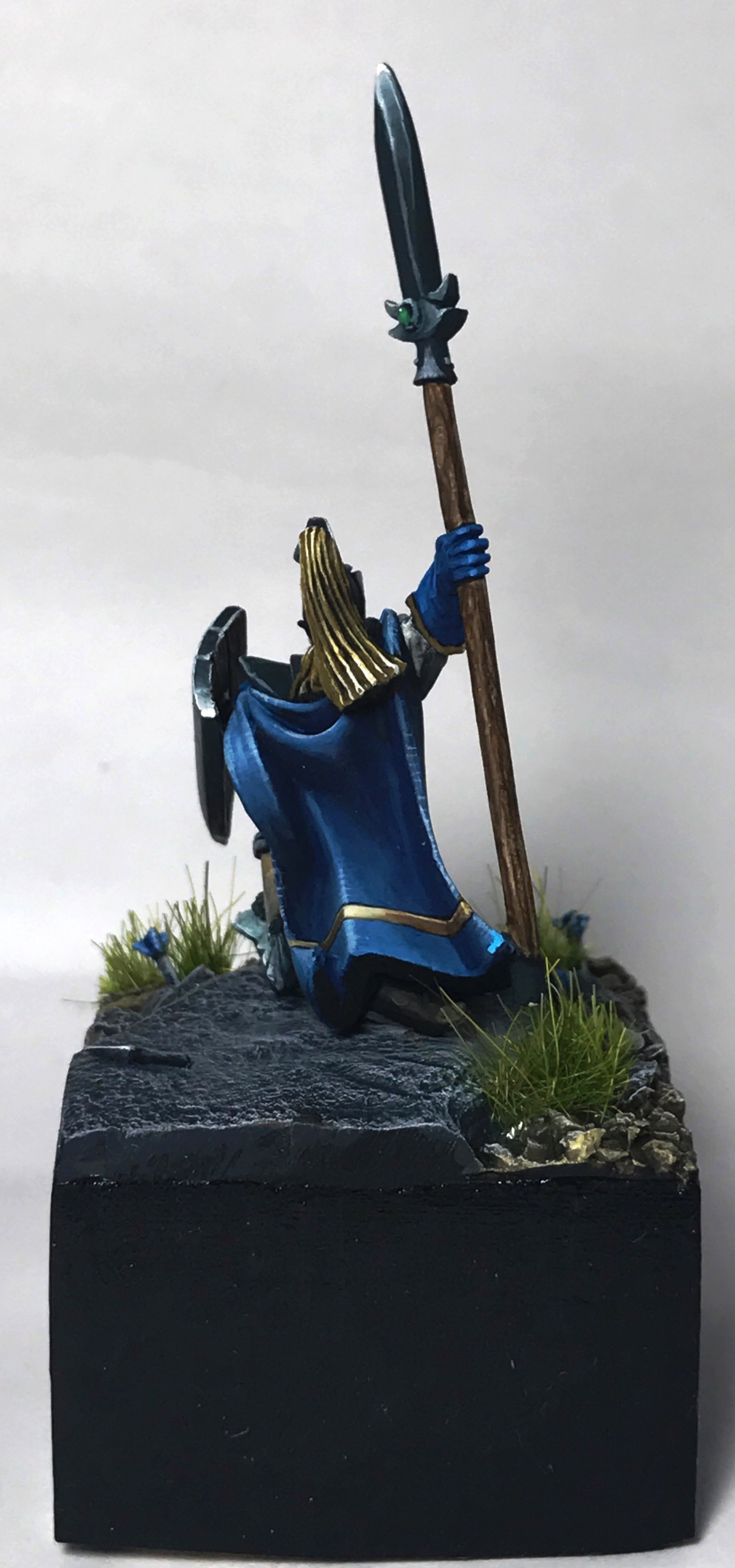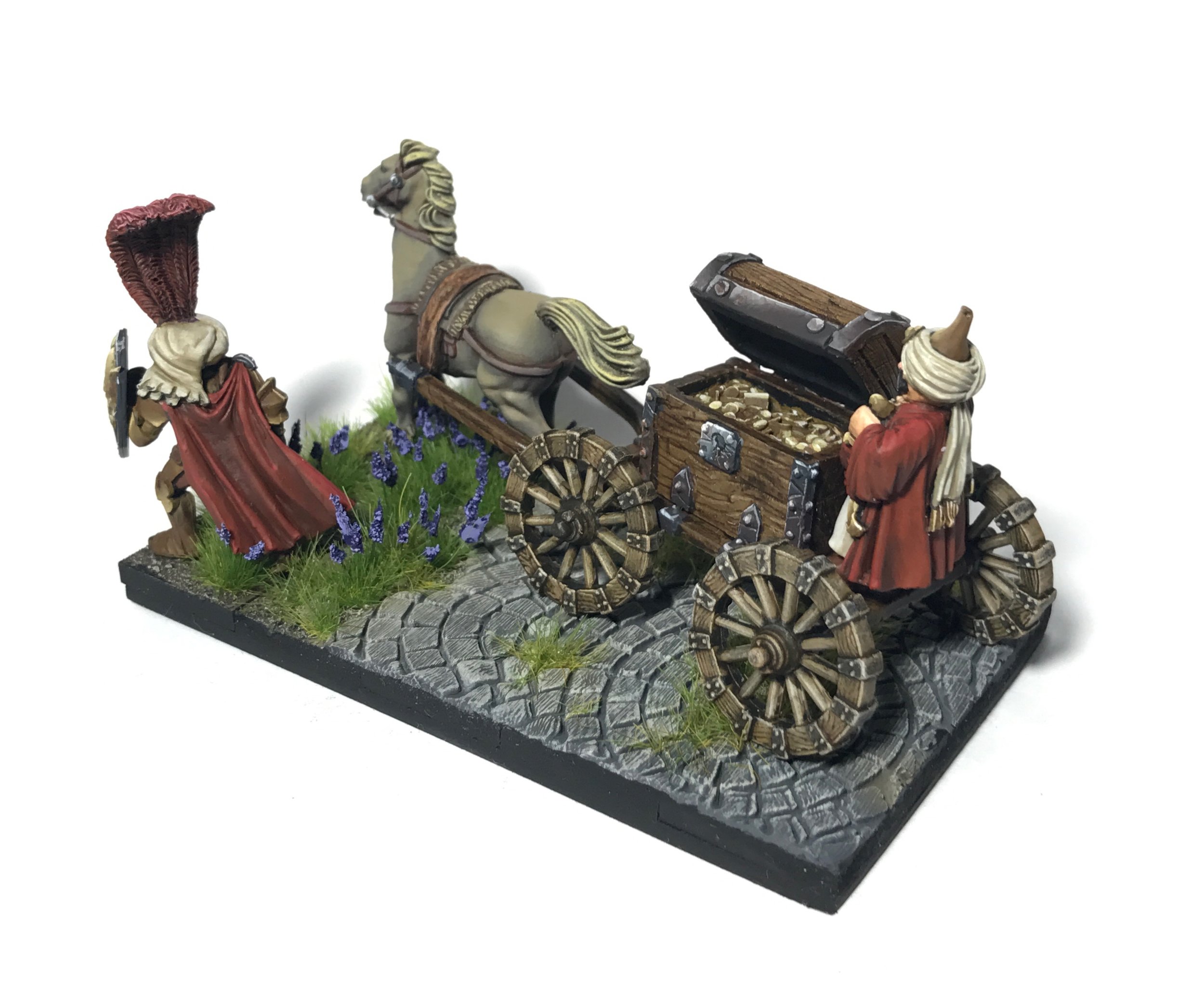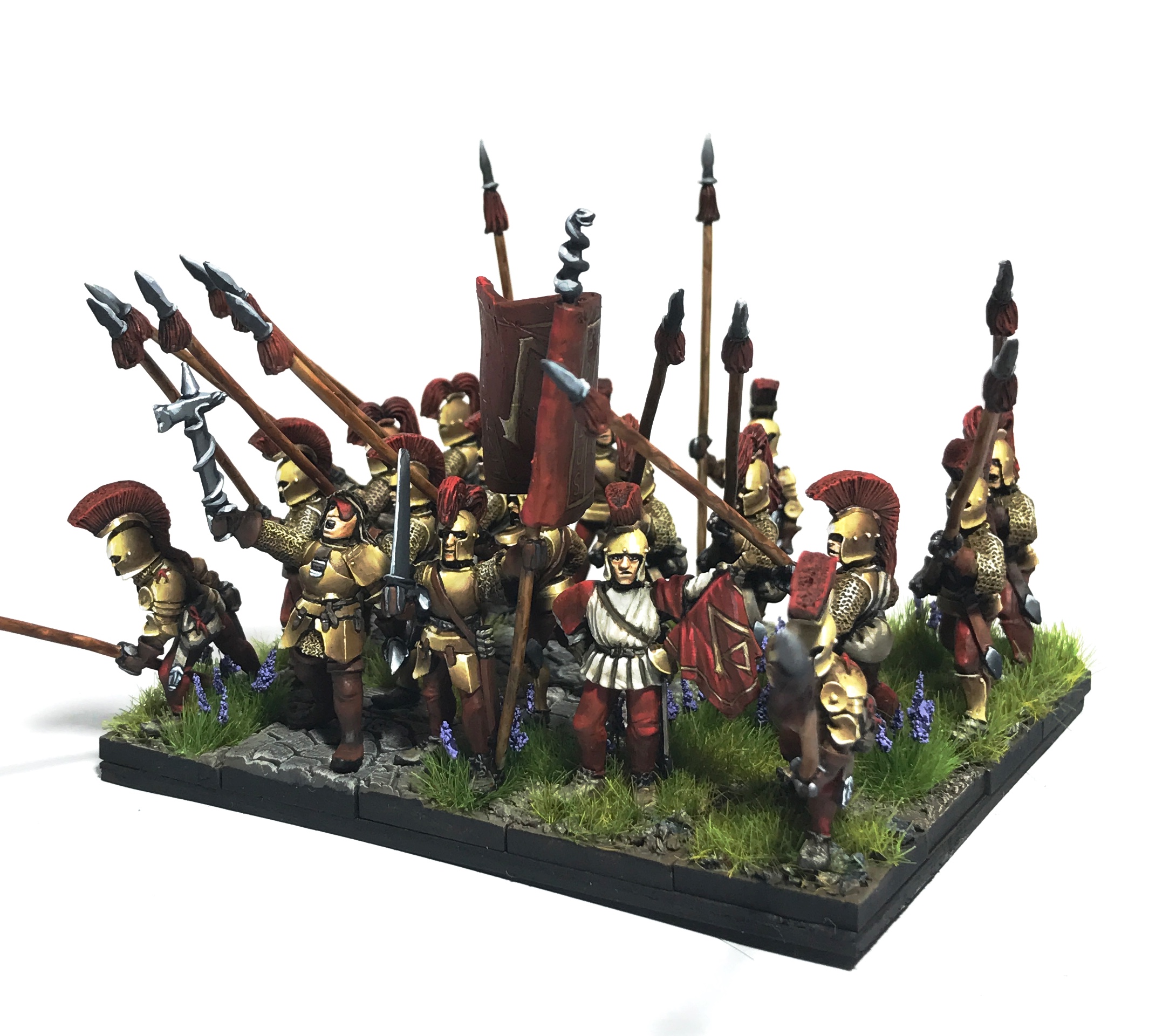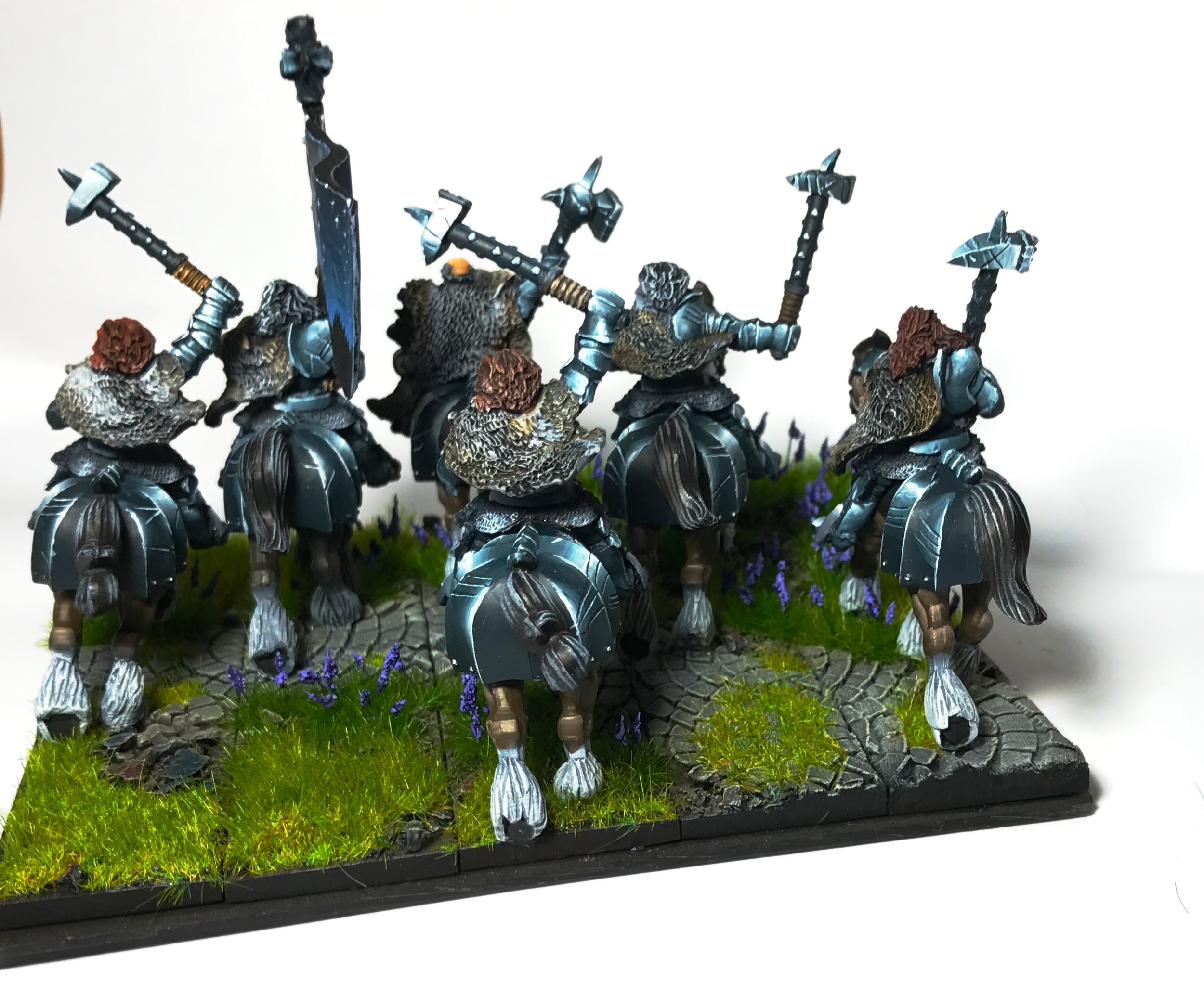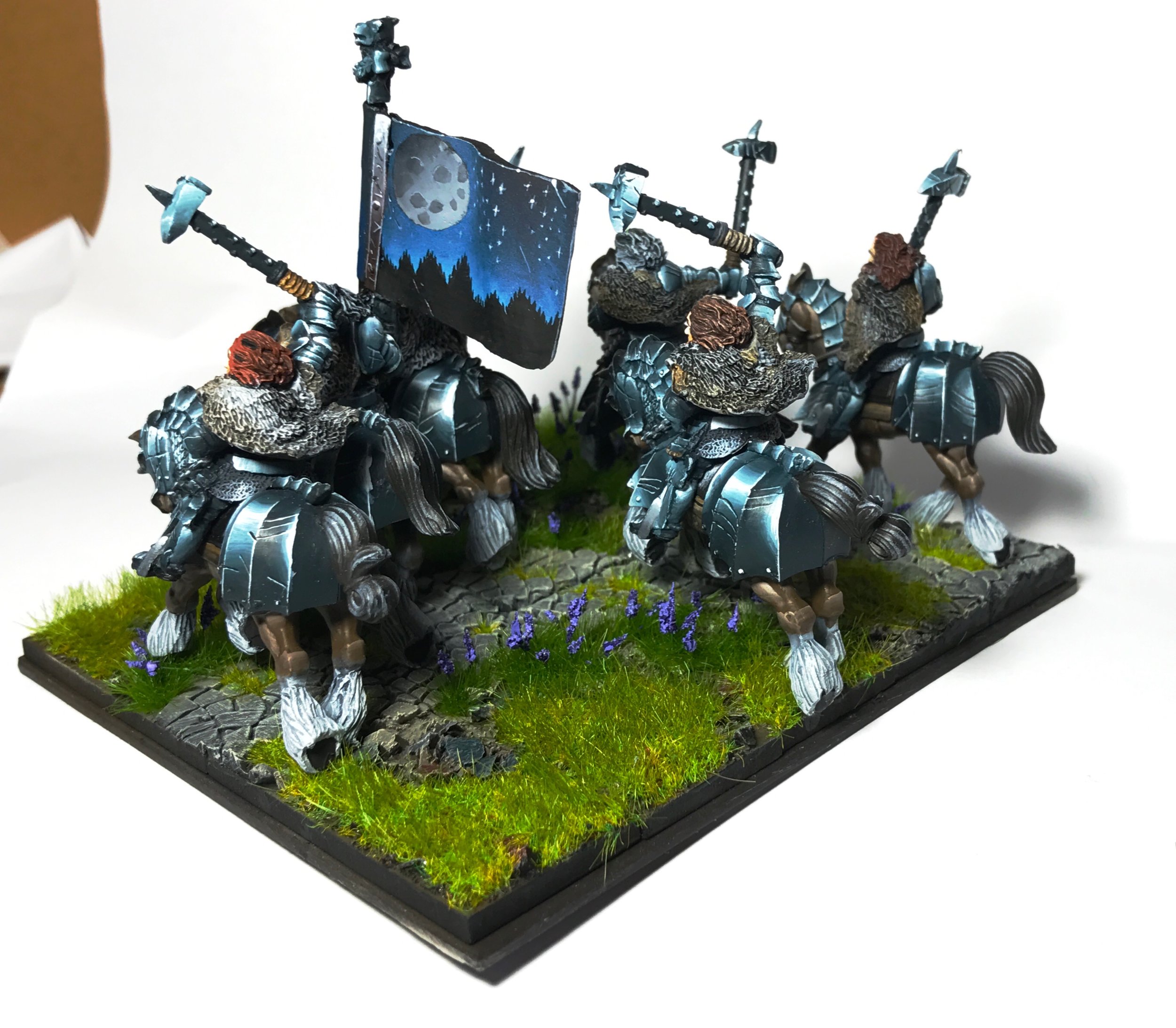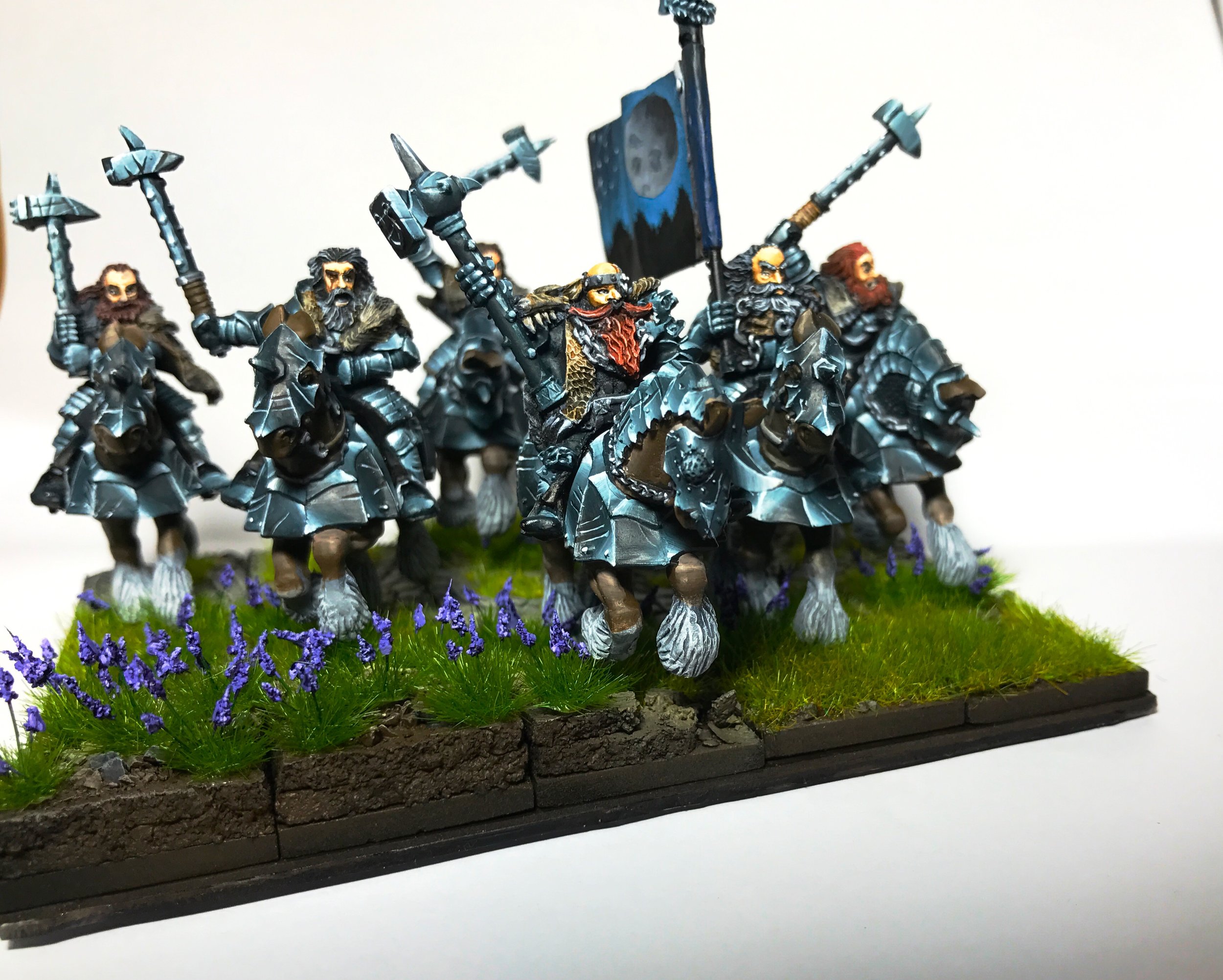Step 1 - Base Coat
Using your base colour, English Uniform for me, paint the surface. I normally like to finish each segment before moving on to the next, but in this case I base coated the whole armor.
Step 2 - Wet Blending
Once you have identified the point that will have the lightest colour, you're going to need to create a smooth transition of your highlight colour (Sand Yellow for me) to the base colour. I use a process called the loaded brush technique. You can use glazing or layering, but they take longer and in my opinion once you're good at the loaded brush it produces better results. If you don't know this technique, there are a bunch of videos linked at the end that will show you how, I highly recommend learning it. If you're after a shinier metal, make the transition faster, smaller bright point will look shinier than larger surfaces of bright metal.
Step 3 - Edge Highlighting and White Points
Once you're happy with the blend, dry your brush, load up in the highlight colour and run it along the edge of any surface pointing towards the light source. Do not edge surfaces pointing away from the light, it won't look right. Then with a tip of thinned down white, put points against any areas that you thing should stand out. The brightest corner of your highlight colour, any corners pointing towards the light, the edge above your brightest point of highlight colour.
Step 4 - Shadows and Rivets
With your shade colour (Armour Brown for me), thin it down (thinner is better because you can always do it twice if you need to) and focus on any areas pointing away from the light source. If you keep it nice and thin you shouldn't have to worry about creating a sharp edge of paint between your base colour and your shade. Make sure you also put some shade around each rivet in the armor to make it really pop. Put a drop of highlight on the top of each rivet to make it shine too and add to the effect.












